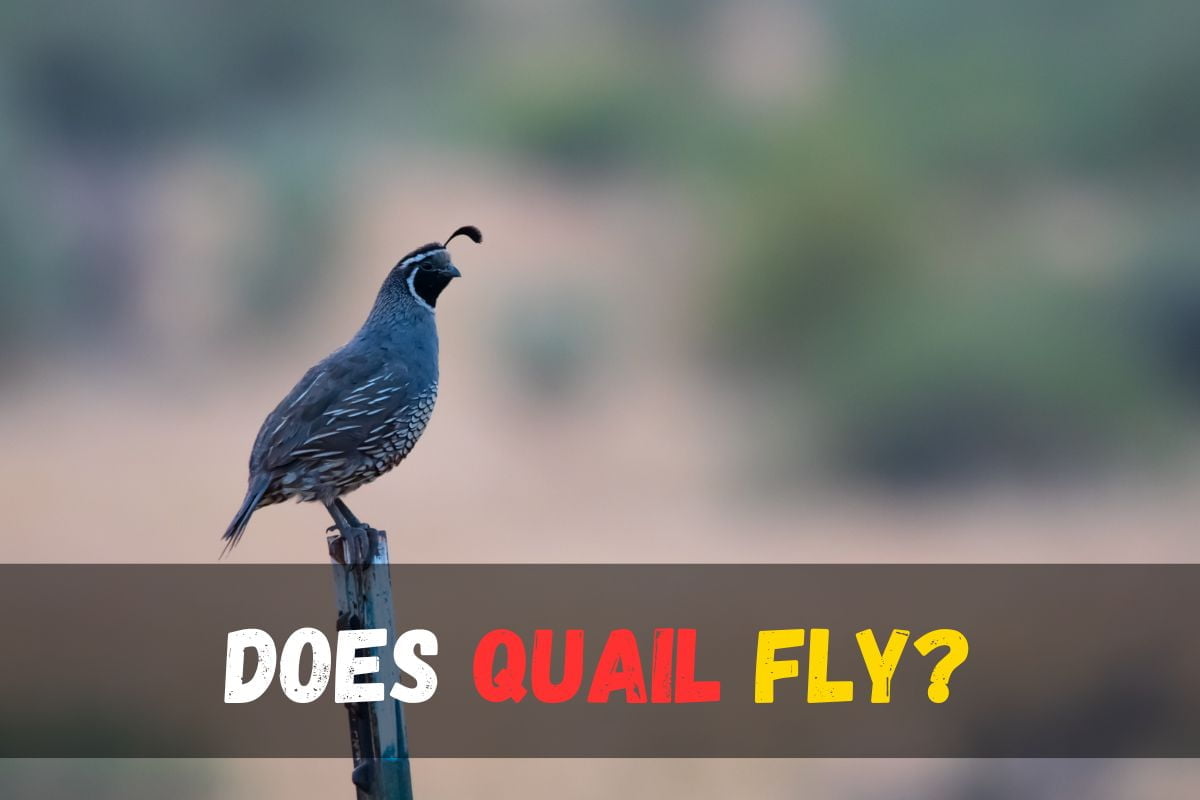In the enigmatic world of feathered wonders, one question has fluttered through the minds of many: Do quails possess the ability to soar through the skies, or are they bound to a terrestrial existence? The curious nature of these small game birds, with their seemingly delicate wings, has sparked debates and left enthusiasts pondering their aerial prowess. Are quails merely ground-dwellers, or do they harbor a secret talent for flight? Join us on a journey into the avian realm as we unravel the mystery, dispelling myths and shedding light on the captivating behavior of quails in the air. The answer, it seems, lies in the delicate balance between their winged capabilities and their intriguing inclination towards the solid ground.
What is Group of Quail Called?
Does quail fly
Quails indeed can fly, but their flying behavior is influenced by various factors. These small game birds, belonging to the bird kingdom, possess wings and are capable of short bursts of flight, particularly when they feel threatened or need to escape predators such as other birds, snakes, coyotes, and cats.
However, quails are generally considered poor flyers, and they prefer walking or running on the ground. This is because flight is energy-intensive and exhausting for them. While they can reach speeds of up to 40 mph when flying, they typically choose to run at speeds of over 15 mph. This behavior is observed both in adults and chicks, who may run or take flight as a last resort to evade predators.
Interestingly, despite having powerful wings, quails often opt for ground-dwelling activities. Aviary hobbyists and homesteaders appreciate quails for their bright colors and patterns, achieved through selective breeding in captivity. It’s essential to note that different species of quail may vary in their flight capabilities, with some being more adept at flying than others.
How well do quail fly?
skies adeptly. Despite this capability, quail exhibits a distinct preference for terrestrial locomotion, opting to walk or run on the ground. Interestingly, their ground-based mobility is noteworthy, with quail reaching impressive speeds of up to fifteen miles per hour.
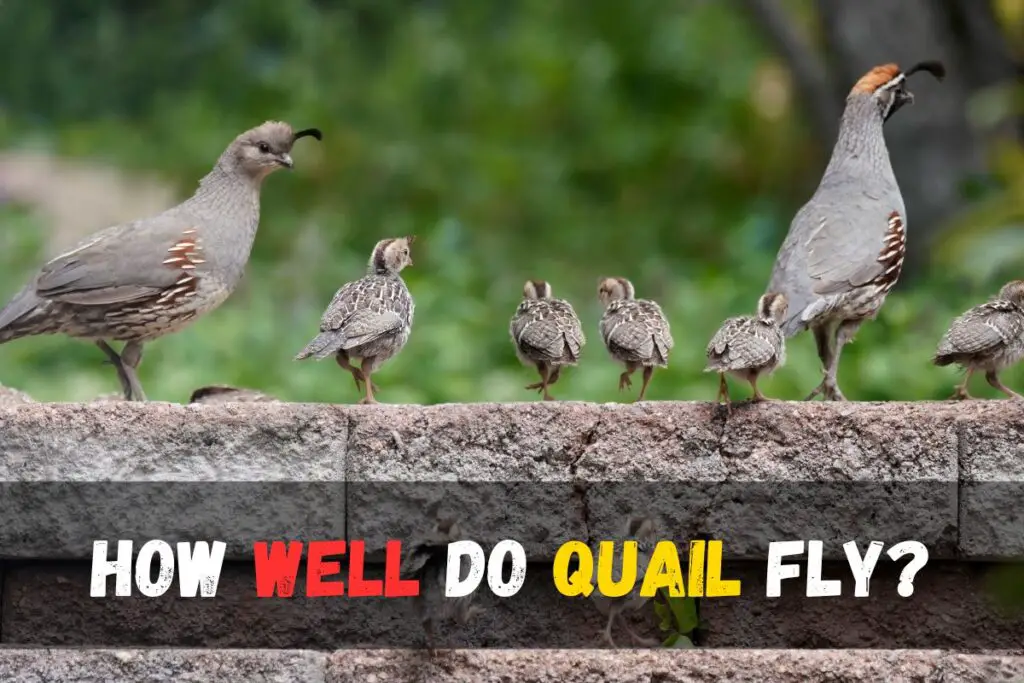
Can quails fly far?
Quails, like most species, possess the ability to fly, covering a distance of about 100 yards or 91 meters. However, it’s important to note that their flights are generally brief and purposeful. Quails typically take to the air either to reach a roost or as a swift escape from potential predators. If you’ve ever encountered a quail unexpectedly, you’ve likely observed the sudden and loud nature of their take-off, a behavior commonly referred to as “flushing.” This rapid burst of flight is a distinctive characteristic, particularly for non-migratory species, where such instances usually mark the extent of their airborne activities. In summary, while quails can indeed fly, their flights are relatively short and are mainly motivated by the need for safety or reaching a specific destination.
How fast does a quail fly?
Quails, with their remarkable capabilities, can achieve speeds of up to 40 mph or 64 kph when in flight. The question of why they don’t opt for more airborne time can be explained by considering their unique body structure and weight distribution.
While their wings possess the power to sustain such impressive speeds, many quail species are not built for prolonged flights due to their specific body types. Instead, these birds have efficiently adapted to life on the ground. Their choice of spending more time grounded is a result of their evolutionary adjustments, allowing them to thrive in their habitat.
Why Do Quail Dislike Flying?
Quail dislike flying primarily due to their physiological characteristics and behavioral preferences. These gallinaceous birds, including domestic ones like chickens and turkeys, are naturally adapted to ground-feeding. Unlike other birds known for their impressive flying abilities, quail are more efficient runners than flyers.
Quail possess wings, but their flying capabilities are not noteworthy. Instead of taking to the skies, quail prefers staying close to the ground. They are adept runners and tend to run rather than fly when faced with the need for rapid movement. The limited flying distance, approximately 100 yards at a time, is indicative of their preference for terrestrial locomotion.
The reason behind this aversion to flying lies in the quail’s physical limitations. While their wings are strong enough to support longer flights, their bodies are not built for sustained aerial travel over extended distances. Therefore, quail chooses to conserve energy and stick to running on the ground. Flying is likely reserved for situations where it is absolutely necessary, given their preference for short bursts of flight.
How high can quails fly?
Quails, often considered ground-dwelling, possess surprising aerial abilities. Their flight capabilities are powered by strong wings, especially potent in short distances or when alarmed. Despite their small size and seemingly limited flying characteristics, quails can ascend to impressive heights.
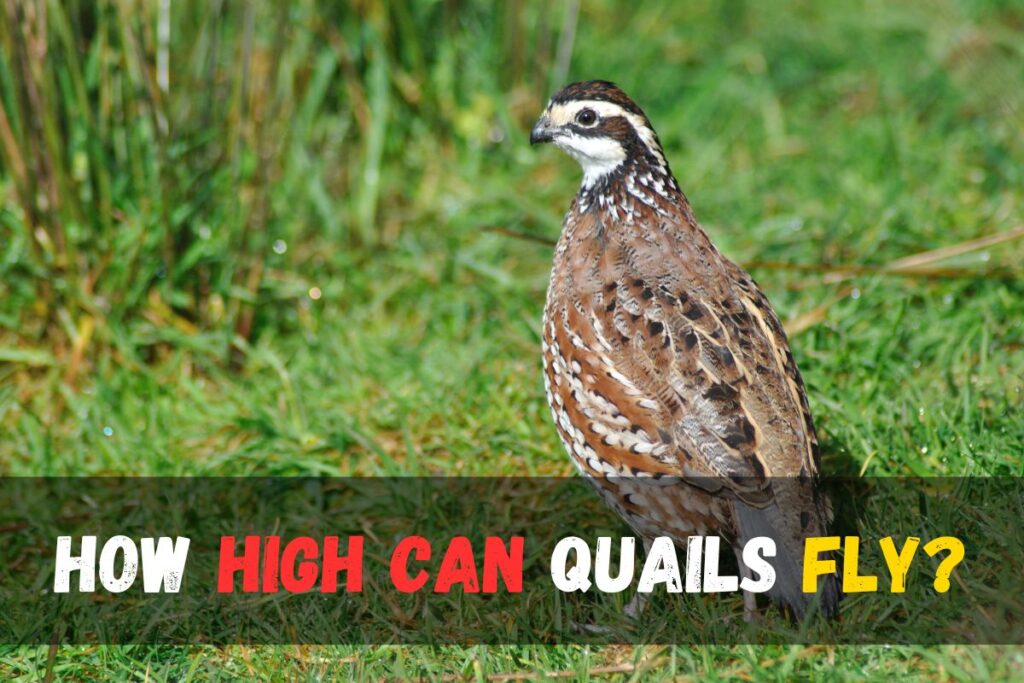
Studies indicate that the highest recorded flight by a mountain quail reached 57 meters (187 ft) above ground level, challenging the perception of their flight limitations. Another study suggests even greater heights, with reports of flights reaching almost 70 meters (230 ft). Intriguingly, these findings pose a challenge in extrapolating such behaviors across the entire quail species, given the limited number of subjects in these studies.
Quails exhibit diverse flight behaviors, varying even within the same species. Some cover mere meters before landing, while others undertake more extended journeys, remaining airborne for thirty minutes or more. This variability hints at different strategies for dealing with risks and take-off challenges based on their habitat.
Determining the precise height quails can reach remains elusive, with observed flights not surpassing 230 ft. However, the existing data suggests a broad range, possibly spanning between 57 and 230 meters (187 and 750 feet). The ability to fly at these heights provides quails with a distinct advantage, allowing them to evade predators effectively and explore distant locations in search of optimal habitats.
Why do quail run instead of fly?
Quails choose to run instead of flying for several strategic reasons. Firstly, running is more calorie-efficient compared to flying. According to experienced hunters, flying consumes significantly more energy—up to 80% more for some species like the sharp-tailed grouse and 60% more for the grey partridge. This makes running a more sustainable option for quails.
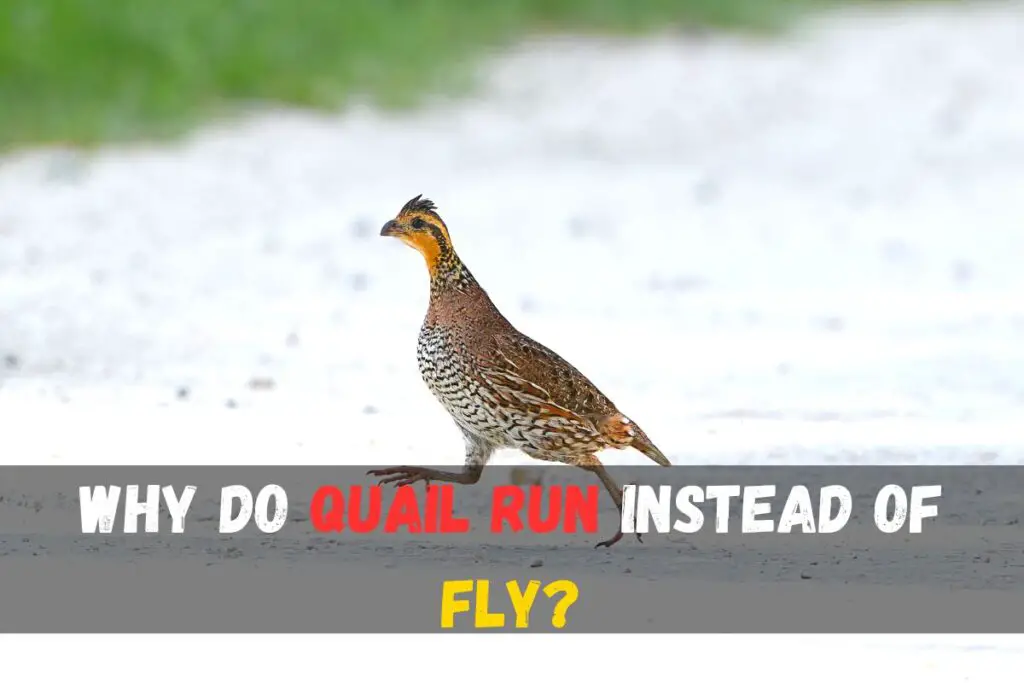
Secondly, quails have evolved to rely on their strong legs for a swift getaway. With speeds reaching up to 45 miles per hour, their long and robust legs play a crucial role in their escape strategy. Flying becomes less of an option due to their small wings, which cannot carry them fast enough to evade close threats. This brings us to the third point—flying is inherently more dangerous for quails. When danger is imminent, running allows quails to quickly distance themselves from predators, minimizing the risk of getting caught.
The specific example of Japanese quails, Coturnix coturnix japonica, further illustrates this behavior. These small-sized birds, weighing only 100-300 grams, face difficulty in sustained flight due to their limited carrying capacity and the quick onset of fatigue. Consequently, they prefer running, utilizing their strong legs and large feet, especially in diverse terrains such as deserts, grasslands, and marshes.
What age can baby quails fly from?
Baby quails typically develop the ability to fly around eleven days to two weeks of age. Unlike some other birds, quail chicks are quite independent once they start flying. During the initial thirty days, they are still vulnerable as their wings and legs continue to develop, limiting their running and flying capabilities compared to their parents. For safety reasons, you’ll often observe quail chicks following a line behind their parents during this period. So, the age at which baby quails can fly ranges from eleven days to two weeks old.
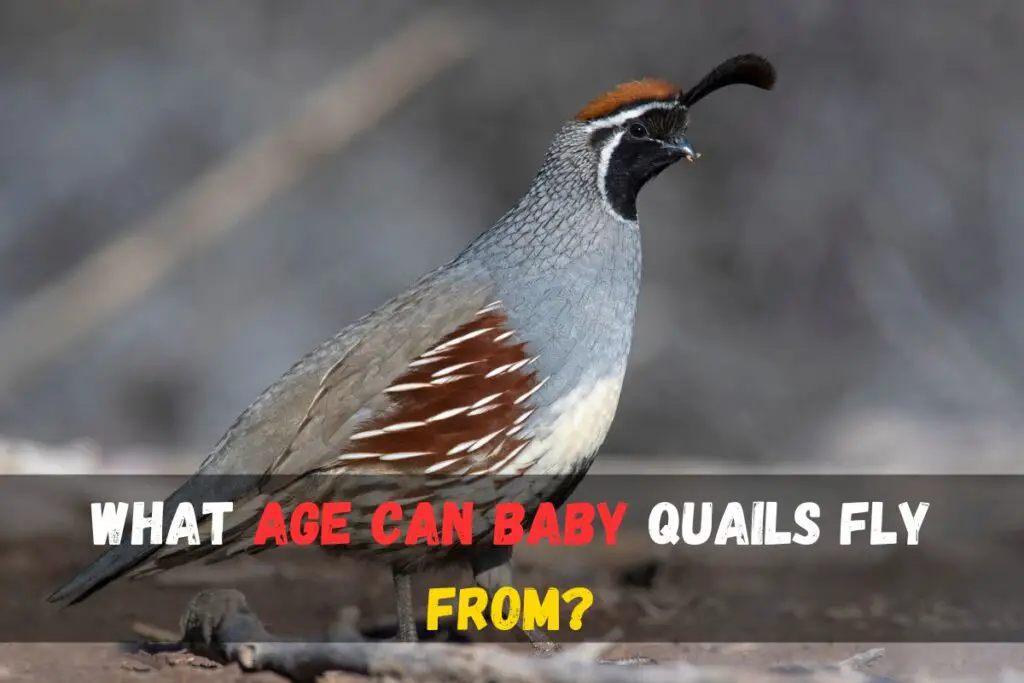
Do quails migrate?
Yes, quails can migrate, but it’s important to note that not all quails engage in migratory behavior. The decision to migrate is often determined by their genetic makeup. Some quail species, like the common or European quail (Coturnix coturnix), possess powerful wings that enable them to embark on long journeys, sometimes across oceans. The migratory patterns, however, vary within the same flock.
Surprisingly, some quails undertake extensive trips from northern Europe to the South Sahara in Africa, while others limit their travels to the southern Mediterranean. Additionally, some quails choose not to migrate at all. The overall number of migratory quails has been on the decline, possibly influenced by changes in weather conditions and food availability.
In regions where quails can easily find sufficient food and shelter year-round, they are adapting to a sedentary lifestyle. This adaptation is a survival strategy, as migration demands a considerable amount of energy. Birds that can adjust to staying in one place increase their chances of survival. Therefore, the decision to migrate depends on the necessity dictated by environmental conditions, and quails showcase remarkable adaptability in response to these factors.
How Do I Stop My Quail From Flying
To ensure your quail remain grounded and secure in their enclosures, consider the following expert advice:
- Roofed Enclosures: Provide a roof for quail enclosures to prevent them from escaping, as these birds, despite rarely flying, can take the chance to do so.
- Secure Coops: Although quail needs less space than other poultry, their coops must be secure to prevent any potential escape. If they happen to fly within the coops, ensure there are no opportunities for them to escape.
- Predator Protection: If raising quail for meat and eggs, containing them is crucial to protect them from predators and to prevent them from roaming and roosting all over your property.
- Nighttime Confinement: Lock quail in a coop or enclosure at night to deter flying. This practice helps in keeping them safely contained during the evening hours.
- Daytime Enclosure: If you don’t want quail flying around your yard during the day, consider building a large, covered enclosure. This ensures they remain contained and do not venture into unwanted areas.
- Wing Clipping: An effective method to prevent quail from flying is to gently clip their wings. This involves trimming the flight feathers on one wing, making them off-balance and unable to take flight. However, keep in mind that this is a temporary measure, as the feathers will grow back after molting.
- Monitoring Numbers: Depending on the available area, be mindful of the number of quail you keep to ensure they have sufficient space and remain adequately contained.
By combining these strategies, you can effectively manage and prevent quail from flying, providing a secure and controlled environment for these birds on your property.
Will Quail fly back?
Quails, unlike chickens, lack a homing instinct. Therefore, if your quails fly away, the chances of them returning to the coop at night are quite low. The practice of free-ranging quails is risky due to the possibility of losing a significant flock in just one day. Unlike chickens, quails aren’t inclined to come back to the coop after flying away. This behavior stems from their nature, and expecting them to return spontaneously may lead to disappointment. It’s important to consider the inherent differences between quails and chickens when managing their housing and free-range practices.
FAQs
What is the purpose of the feather on a quail’s head?
Quails possess a distinctive feature known as a “plume” or “top-knot,” consisting of curled feathers that gracefully crown their heads. The presence of this ornamental attribute is observed in both male and female quails across various species. The intriguing question of why quails exhibit such a unique head adornment finds its answer in the intricate interplay of genes and the dynamics of breeding.
The plume serves as a significant factor in the complex world of quail courtship. Female quails, endowed with a discerning eye, exhibit a distinct preference for males boasting a healthy and vibrant plume. This seemingly aesthetic choice is deeply rooted in the genetic health and vitality it symbolizes. A well-maintained plume becomes a visible indicator of a male quail’s overall health and genetic robustness.
The rationale behind this avian fashion statement lies in the desire of female quails to select mates who are more likely to pass on beneficial genes to their offspring. In the evolutionary tapestry of quail biology, a robust plume becomes a symbol of genetic fitness. Consequently, a male quail adorned with a carefully tended top-knot stands as a testament to its ability to contribute advantageous genetic traits to the next generation.
Can jumbo quail fly?
The Jumbo Brown Coturnix, a specific species of Japanese quail, is known for its robust development in the carefully designed 50′ x 500′ flight pens during its upbringing. This unique rearing environment allows these birds to develop flight capabilities akin to those raised in the wild. Despite their plump stature and full, earthy brown coloring, Jumbo Brown Coturnix quails exhibit a remarkable ability to fly. The flight pens play a crucial role in fostering this natural behavior, enabling them to soar with agility and grace. Therefore, yes, Jumbo Brown Coturnix quails can indeed fly, thanks to their upbringing and the conducive flight pen environment.
Can king quail fly?
King quails are a species of birds, and although they possess the capability to fly, they exhibit a preference for spending their time on the ground. Unlike some other bird species, king quails do not excel in flying and are not known for covering long distances through flight. Their flying abilities are limited, aligning with their inclination to stay closer to the ground. Therefore, while king quails can indeed fly, it is not a prominent aspect of their behavior or lifestyle
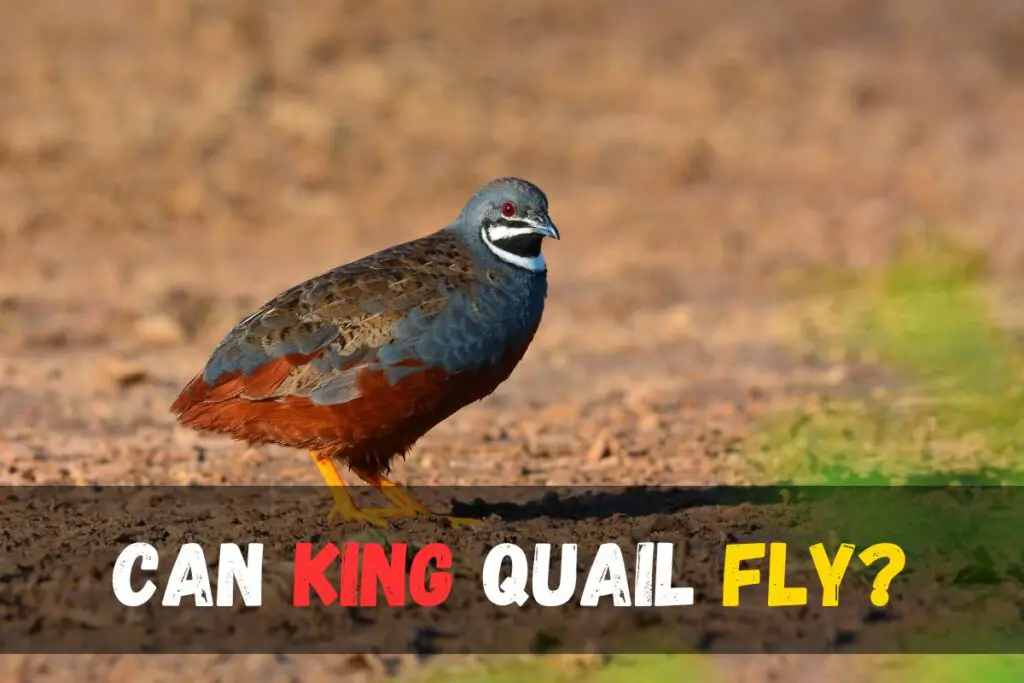
Can Japanese quail fly?
Japanese quail, like all quails, are indeed capable of flying. Therefore, it is crucial to ensure that their enclosure, or pen, is covered. The imperative to cover the pen arises from the natural behavior of quails, who, despite the provision of small nests with wood shavings and straw, often choose to lay their eggs beside their nesting boxes. This inclination to fly makes it essential to create a secure environment for them.


